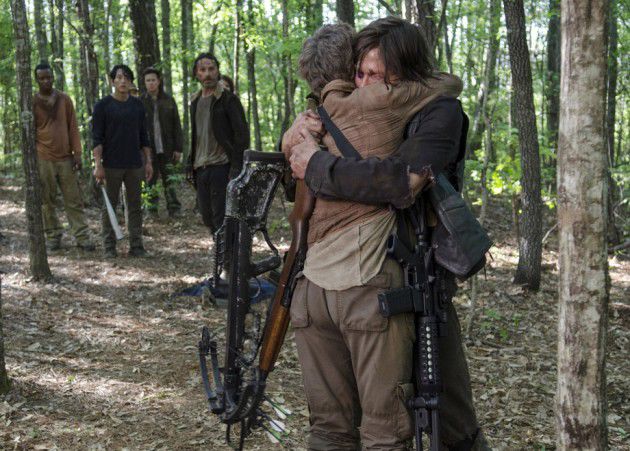‘The Walking Dead’ comes back to life with fifth season
November 13, 2014
Never before has there been a show as polarizing as AMC’s top hit, “The Walking Dead.” The show has endured production problems—three different show runners over five seasons and endless comparisons to flagship AMC programs such as “Mad Men” and “Breaking Bad.” Nevertheless, the show has retained its title as the most popular cable drama among the 18-49 demographic.
This hasn’t been without a dip in quality. While the first and second seasons received highly positive reviews, seasons three and four saw fans grow restless with the show, as the slow pacing and poor character development led fans to question the direction of the program.
Now, through four action-packed seasons of walkers, cannibals and creepy hospitals, “TWD” is primed to take itself to even greater heights, and has seemed to find its balance between “zombie action thriller” and “apocalyptic drama.”
For the longest time, the main complaint about the show was the excruciatingly slow pace. Beginning with Rick Grimes and Co.’s arrival on Hershel’s farm, the show has often been too comfortable in its stagnation. The group’s extended stays on the farm and at the prison (seasons three and four) made fans restless, and they clamored for more undead action and, possibly more so, a greater understanding of what caused the outbreak.
The departure from the “sanctuary,” Terminus in the fifth season premiere effectively terminated the stagnant nature of the characters.
The function of the cannibalistic inhabitants of Terminus was not just to make us sick to our stomachs, but to show that desperation and hunger may drive some survivors to the brink of what is considered humane.
Elsewhere, the development of characters such as Bob Stookey (Lawrence Gilliard, Jr.) and Carol (Melissa McBride) gave us a reason to feel for the survivors. While Bob’s never-failing sense of humanity gave us a hero we could both bond with and admire, Carol’s evolution from a soft-spoken, abused housewife to hardened killer gives us a surreal portrayal of what it takes to survive at world’s end.
Early last season, the show seemed to struggle with balancing out its large cast. Developing characters with such little screen-time left plenty to be desired.
Recently, such as last Sunday’s “Slabtown,” the show has given specific characters their own episodes and storylines, creating both a more cohesive narrative and a chance for each member of the talented cast to shine.
Speaking of the cast, the show appears to have embraced the success of HBO’s “The Wire” in casting three former cast members including Larry Gilliard, Jr. (Bob), Chad L. Coleman (Tyreese) and Seth Gillam (the newly acquainted Father Gabriel).
The knock on “The Walking Dead” is that while its substance may make for great television, it is nothing more than a brainless zombie-smashing romp.
With the show’s new dedication to mobility and its strong casting choices, it has proven itself to be worthy not only of big-time ratings, but of critical acclaim.
Like one of its walkers, the show has seemed to reanimate, but unlike the undead, it’s not dead yet.


